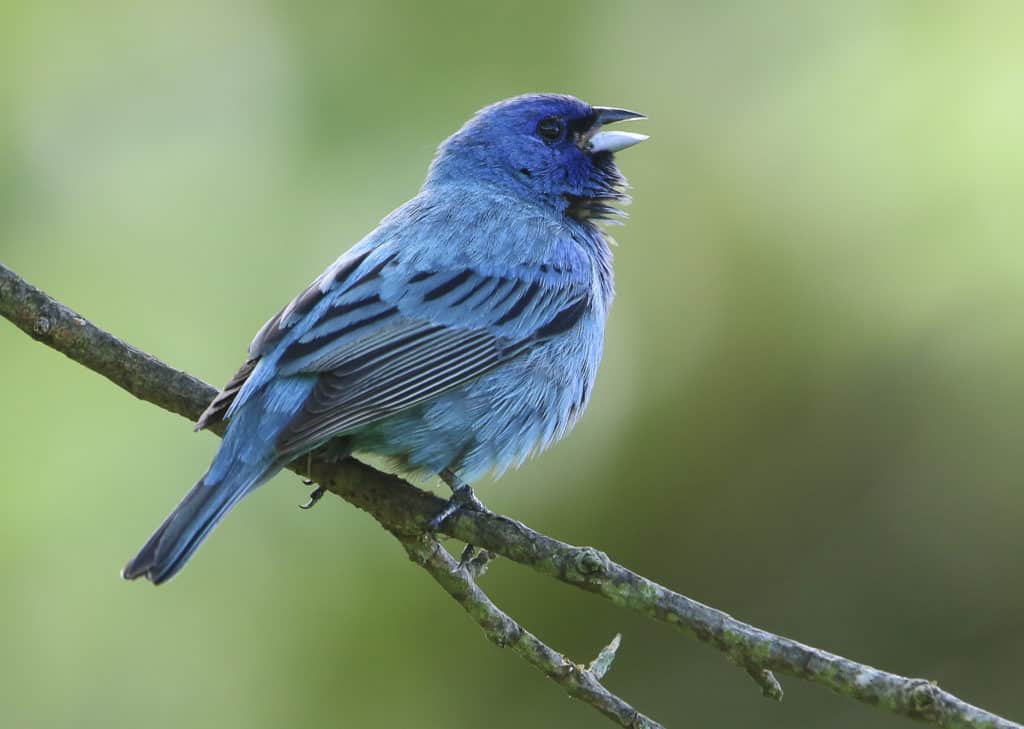Creature Feature

Flashes of Blue
I recently went on a long walk at Kinder Farm Park. It wasn’t very crowded and the people I walked past maintained social distancing and many had mouth coverings. One person was bird watching.
Kinder Farm Park has been a spot well-known for a wide variety of birds. Some of the interesting birds I have observed there include cuckoos, chats, prairie warblers, nesting kestrels, great horned owls, various hawks, Baltimore orioles, blue grosbeaks, and the colorful indigo bunting.
During my recent walk, I saw five male indigo buntings. I heard them before I saw them. Their singing is pretty distinctive and in the early spring, they do a lot of it to establish territory and attract a mate. The male buntings have iridescent feathers that yield a different hue depending on the angle of the light. With the sun behind them, they appear dark blue, almost black. At eye level with the light coming from behind the observer, they become a bright indigo blue.
Indigo buntings eat seeds, fruit, and some insects. They prefer open areas and are found at the edges of roadways, powerline right-of-ways, and along the edge of forests. I tend to find them near wild cherry trees and blackberry brambles. The singing males like to perch atop small trees in or near a field. Most are fairly wary and will fly if approached. If they have a nest nearby, they may approach you chattering and fluttering in an attempt to lead you away from the nest. The drab brown female makes her nest in dense foliage. She takes on the chick-rearing responsibilities as she both makes the nest and feeds the chicks. The male stays nearby on alert for danger. The birds typically have two broods a year with an average of three chicks each. The young leave the nest fairly quickly, going from being a just-laid egg to a flying fledgling in 22 days.
Each fall, the buntings migrate south for the winter with half staying along the Gulf coast and a half traveling to Mexico and South America. Over recent years, the returning birds’ summer nesting range has shifted north. Audubon scientists have shown they are now uncommon in its previous southern range of Alabama and Georgia and have expanded into Canada.
The indigo bunting is very common in our area and is likely to be found in any county or state park. Although the park’s management and usage have seemed to have decreased some bird activity, Kinder Farm Park remains a hotspot for buntings. Listen to their songs on the Cornell University Ornithology All About Birds website. That way you can find them before you can see them.
